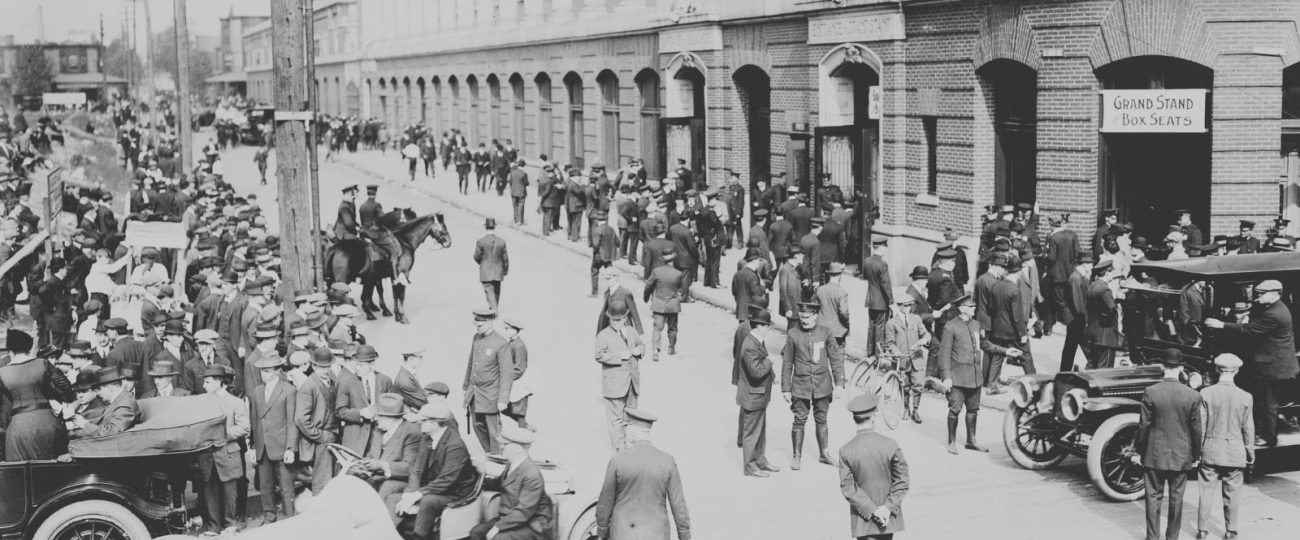What Happened On September 28th?
On September 28, 1941, Ted Williams entered Shibe Park with his batting average hovering just below .400. He had every reason to sit out the doubleheader against the Athletics and preserve the milestone, but Williams wasn’t one to take the easy route. He insisted on playing both games, determined to earn his place above .400 through action, not technicalities.
In his first at-bat, Williams faced Porter Vaughan and drove a sharp single to right field, immediately raising his average above .400. The crowd recognized the significance of that hit, understanding they were witnessing something special. Williams followed up with another single, his timing and mechanics sharp. By the end of the first game, he had gone 4-for-5, pushing his average to .404. His remarkable performance silenced any debate about whether he deserved the title of a .400 hitter.
Instead of resting, Williams suited up again for the second game. He faced Fred Caligiuri, a rookie making his first start, but Williams didn’t let up. He notched two more hits in three at-bats, finishing the day with a 6-for-8 performance and solidifying his season average at .406. His last hit, a clean line drive in the eighth inning, left no question—Ted Williams had earned every bit of that .406, and he had done it on his own terms.
What made Williams’ decision to play both games even more impressive was the pressure he had faced throughout the season. Boston’s press had not been kind to him, often criticizing his personality and his refusal to play up to the crowd. Reporters accused him of being distant, but Williams never played for the headlines. He played for the love of hitting. His performance wasn’t driven by the desire to win public favor; it was driven by his personal pursuit of perfection.
Maintaining a .400 average throughout an entire season is a feat almost impossible to grasp. Baseball is a sport where even the best hitters succeed only a third of the time. A slump can knock a hitter off course, and Williams was no stranger to slumps. In August of that season, he went 0-for-17 in back-to-back games against Cleveland. Many hitters would have let such a stretch derail their momentum, but Williams kept his focus. He bounced back, fine-tuned his swing, and kept moving forward, never letting a bad stretch consume him.
Williams’ ability to control the strike zone was unmatched. His patience at the plate made pitchers throw into his hitting zones, forcing them to come to him. His 147 walks that season were a testament to his incredible plate discipline. Williams rarely chased pitches outside the zone, instead waiting for pitches he could drive. This approach not only preserved his batting average but also made him one of the most feared hitters in the league.
Pitchers in 1941 weren’t pushovers. Williams faced some of the toughest arms in the game, including Hall of Famers like Bob Feller and Lefty Grove. Defensive shifts were becoming more common, and teams used every tactic available to neutralize his bat. But Williams outsmarted them. He adjusted to their strategies, making solid contact even when pitchers tried to work around him. His .406 was not the product of weak competition or easy matchups—it was earned against the best pitchers in baseball.
In 1941, the balls were softer and less consistent than they are today. Hitters couldn’t rely on the ball carrying as much, making it harder to hit for both average and power. Yet, Williams still managed to hit 37 home runs, proving that he could combine precision with power. The conditions didn’t favor hitters, but Williams found ways to thrive, adapting to the limitations and still excelling at an elite level.
Williams’ decision to play both games that day wasn’t just about protecting his average; it was about setting the standard for himself. Many players in his position might have opted to sit out, content with a technical .400 season, but Williams believed in earning every statistic. The pressure didn’t come from the crowd, the media, or his teammates—it came from within. He had spent years refining his approach at the plate, studying every nuance of hitting, and knew that sitting out would leave him with unfinished business.
Williams had a nearly obsessive routine before games. He would spend hours analyzing the day’s pitchers, breaking down every detail of their delivery. He could recognize a fastball or a curveball from the way the ball spun as it left the pitcher’s hand, and he used this to his advantage. His preparation went beyond typical practice—it was a methodical process that turned him into one of the most dangerous hitters in the game.
By the time the second game ended, Williams had firmly placed his name in the record books. He hadn’t just finished with a .406 average—he had done so in a way that left no room for doubt. Ted Williams didn’t just chase a number; he made sure that number represented everything he stood for as a player.





